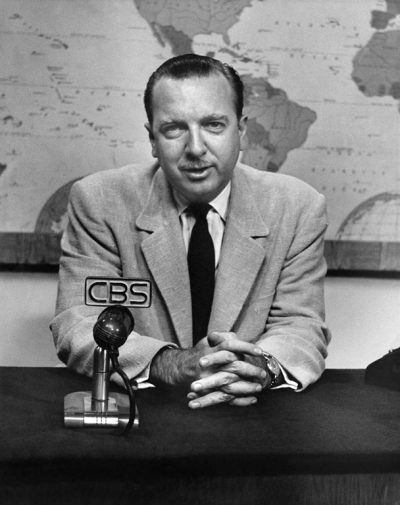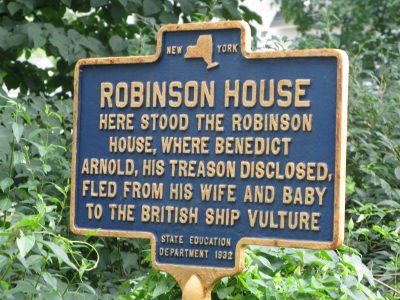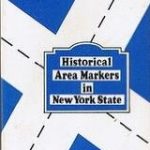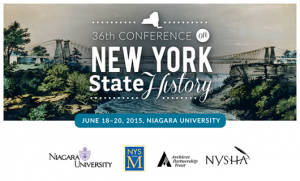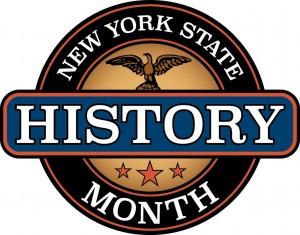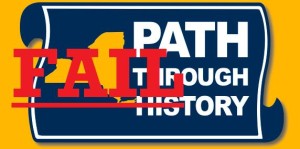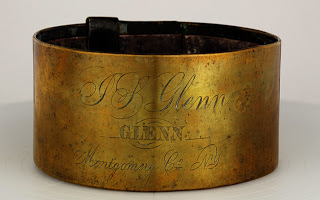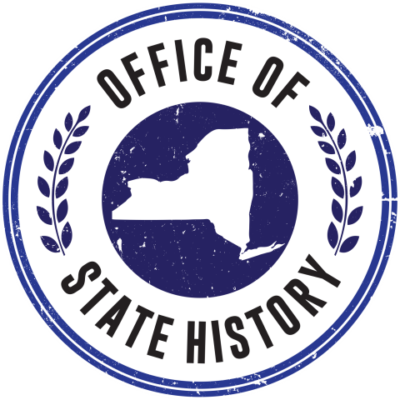
This blog is the third in an ongoing series about the need for the New York History community to advocate.
The first blog (History Advocacy: Should the History Community Advocate?) contrasted successful advocacy efforts within New York State versus the absence with the New York State Office of Parks, Recreation and Historic Preservation (NYSOPRHP) on behalf of the 35 historic sites and the facilities owned (but not always operated) by it. Many of the 35 sites owned by the NYSOPRHP have friends groups but not all of them do. Those groups provide a potential base for creating an advocacy community.
The second blog [New York State Museum (History Advocacy: The Good (Connecticut) and the Bad (New York State Museum)] shows a better way. The “good” contrasted how Connecticut is organizing related humanities organizations to deliver a more powerful message to state electors regarding specific items. The “bad” is regarding the New York State Museum. Its situation is different from the historic sites of the NYSOPRHP in that the Museum is operated through the New York State Board of Regents, a more difficult entity to approach than one’s local legislators.
In this blog, I wish to address a position within the State Museum – the State Historian.
THE PROBLEM
The following comes from John Warren in New York Almanack, in part in response to the articles in the Albany Union about the condition of disrepair in the state on state history.
Long time readers of New York Almanack will recall the battle this publication helped wage to make the State Historian a stand-alone position, rather than a part time position. That eventually happened, but not before the position was downgraded first.
In 2017, the Museum announced the creation of a New York State History Advisory Group. The group was expected to meet, according to the announcement, “periodically to advise the New York State Historian on issues related to the history field in New York State, including suggestions pertaining to local and municipal historians, academic history, historic preservation, and heritage tourism.”
Has it ever? Who knows. We’ve never heard about it again. But contrast that to the Department of Environmental Conservation’s advisory group on the Adirondack High Peaks, organized two years later. They held public meetings, solicited public comments, released a final report with creative recommendations and led to the creation of the first ever Adirondack and Catskill Park coordinators.
Two different problems are raised here. Once upon a time the position of State Historian was a powerful one. It operated separately with its own line of reporting to the Governor. And it had staff. Those days are long since gone.
As indicated above, the history community has to settle for the meager crumbs it is now offered. This blog is not about Devin Lander, the individual, who is the State Historian, but about the definition of the position within the State bureaucracy. When I first became involved in the New York State History situation, Bob Weible served as the state historian. However, technically, he was a curator within the State Museum. So to have a person designated as the fulltime historian seemed like a major improvement even if that individual’s position was deep within the Museum bureaucracy. New York is a big state and with many anniversaries. There are limits as to what he can accomplish.
For example, as the chief public historian, the state historian receives the annual reports of the municipal historians from throughout the state. Many municipalities do not have historians. Now imagine if he received 1600+ reports to read each each year. Or suppose there ever is funding for the American Revolution 250th and municipalities and other history organizations submit applications for that funding. Does he have the resources to review them all?
The Advisory Group may have met once or it may be I am just thinking of the announcement of its creation. Ironically, now due to COVID, we are much more familiar with online meetings. As a result, it is not necessary to physically meet in Albany. Still there is a lot to be said for in-person meetings when people have the opportunity to network and engage in private conversations.
Below is the list of the proposed advisory group from 2017. It should be noted that state government people cannot lobby the state government. Since 2017, some of the people on the list may be dead, retired, from defunct organizations, or longer interested. Still it is worth reviewing it. It provides a glimpse into what the advocacy group on behalf of New York State might look like.
State and federal government employees who could not advocate:
– John Bonafide, Historic Preservation Office, NYS Office of Parks, Recreation,
and Historic Preservation
– Ross Levi, Vice President of Marketing Initiatives, Empire State Development/NYS Division of Tourism
– James Folts, PhD Head of Researcher Services, New York State Archives; Fellow,
New York Academy of History
– Bob Radliff, Executive Director, Erie Canalway National Heritage Corridor
– Amy Bracewell, Superintendent, Saratoga National Historical Park
– Lisa Keller, PhD Professor of History, SUNY Purchase; Fellow, New York Academy of History
– John Haworth Senior Executive, National Museum of the American Indian-New York City
Non-government members:
– Kenneth T. Jackson: PhD Jacques Barzun Professor of History & Social Science, Columbia University; Fellow, New York Academy of History
– Paul D’Ambrosio, PhD President and CEO, NYS Historical Association/Fenimore Art Museum and the Farmers Museum
– Marci Reaven, PhD Vice-President for History Exhibitions, New-York Historical Society; Fellow, New York Academy of History
– Gerald Smith, Past Board President, Association of Public Historians of NYS; Broome County Historian
– Jay Di Lorenzo, President, Preservation League of New York State
– Amie Alden, Executive Chair, Government Appointed Historians of Western NY; Livingston County Historian
– Alexandra Parsons Wolfe, Executive Director, Society for the Preservation of Long Island Antiquities
– Sara Ogger, PhD Executive Director, Humanities New York
– Craig Steven Wilder, PhD Professor of American History, Massachusetts Institute of Technology; Fellow, New York Academy of History
– Bruce Dearstyne, PhD Author and Historian Adjunct Professor, University of Maryland
– Stefan Belinksi Community Historian The People of the Colonial Albany Live Here Website; Fellow, New York Academy of History
– Carol Kammen Tompkins County Historian; Fellow, New York Academy of History
– Judith Wellman, PhD Professor Emerita, SUNY Oswego; Director, Historical New York Research Associates; Fellow, New York Academy of History
– Ivan D. Steen, PhD Director, Center for Applied Historical Research; SUNY Albany
– Melissa Brown Executive Director, The Buffalo History Museum
– Monica Mercado, PhD Assistant Professor, Colgate University
– Eva M. Doyle Retired Teacher, Historian and Columnist
The list could be revised and updated for 2023. The problem is regardless of the names, there is no organization or individual who could do so. I certainly would add the New York Council for the Social Studies as well as the Museum Association of New York, the Greater Hudson Heritage Network, New York State Archaeological Association and the New York Archaeological Council. Other people will have other suggestions for who and what sectors should be included. With the collapse of the New York State Historical Association, a private organization, (a sore topic and the subject of multiple blogs here and in New York Almanack), and the diminution of the position of the State Historian position, the state history community remains rudderless and leaderless. Nonetheless, the failed advisory group provides a glimpse of what might be possible.
The list of advocacy efforts for the New York State history community includes both the State Historian and creating an advisory group with government officials invited to provide updates at possibly quarterly meetings.


